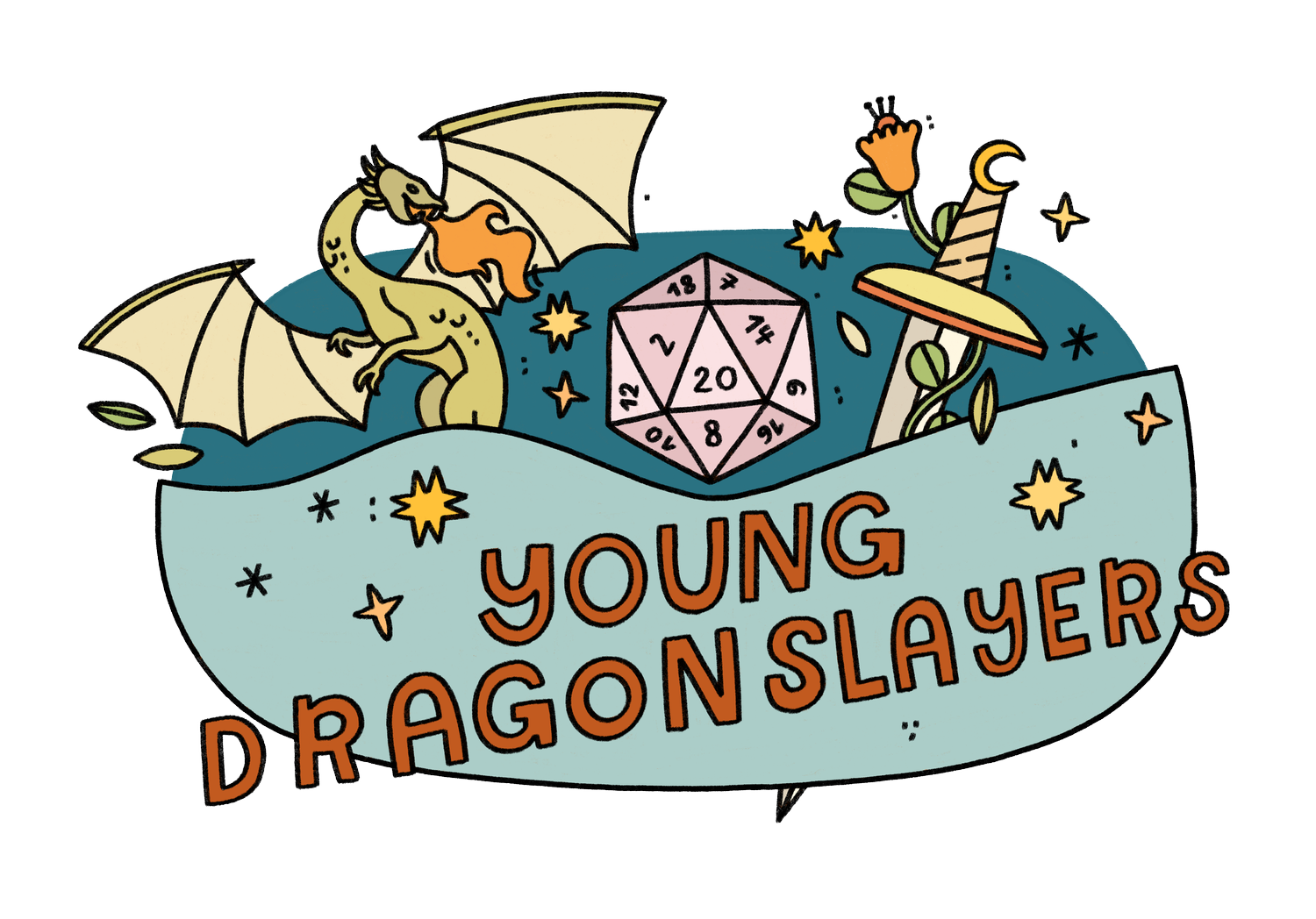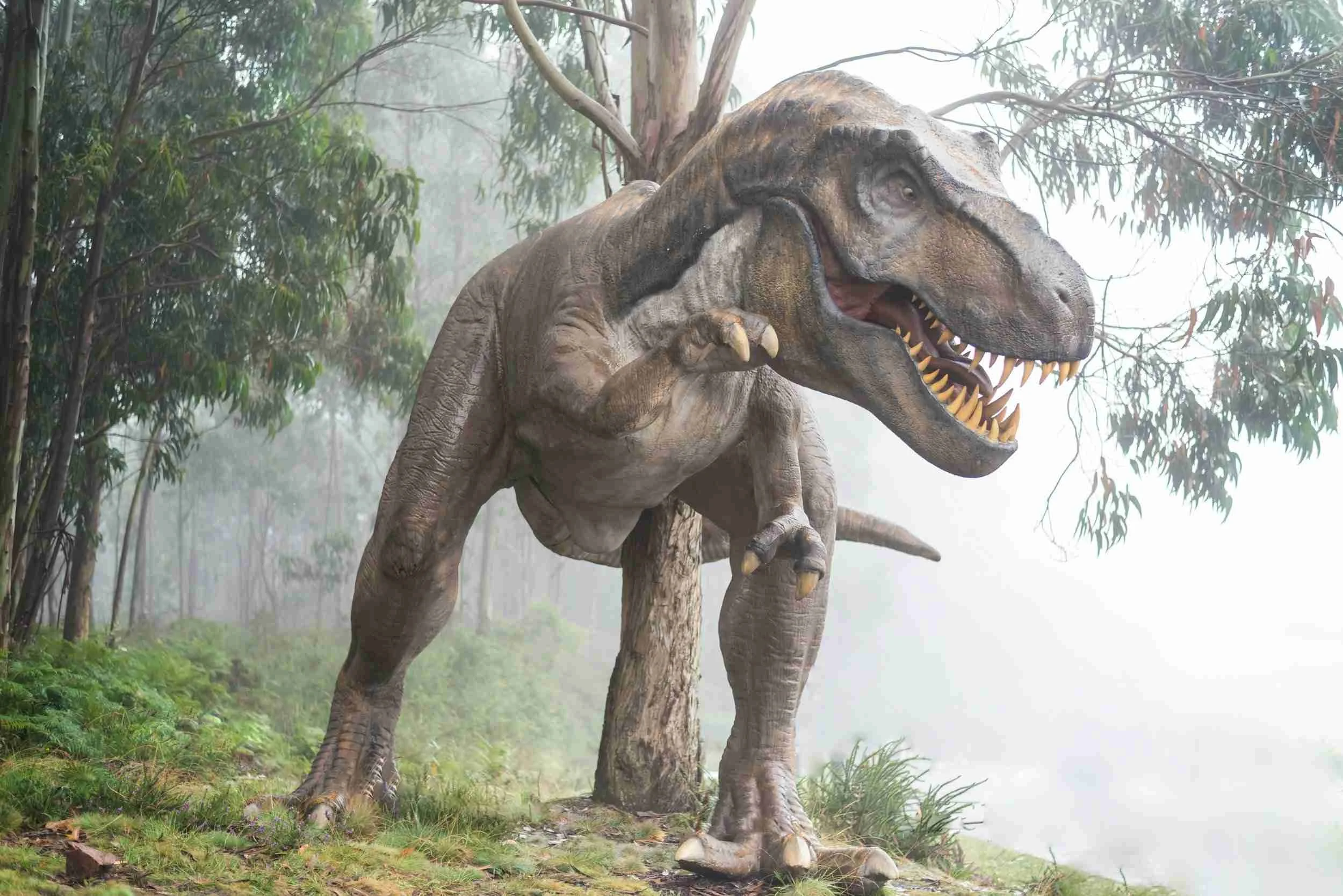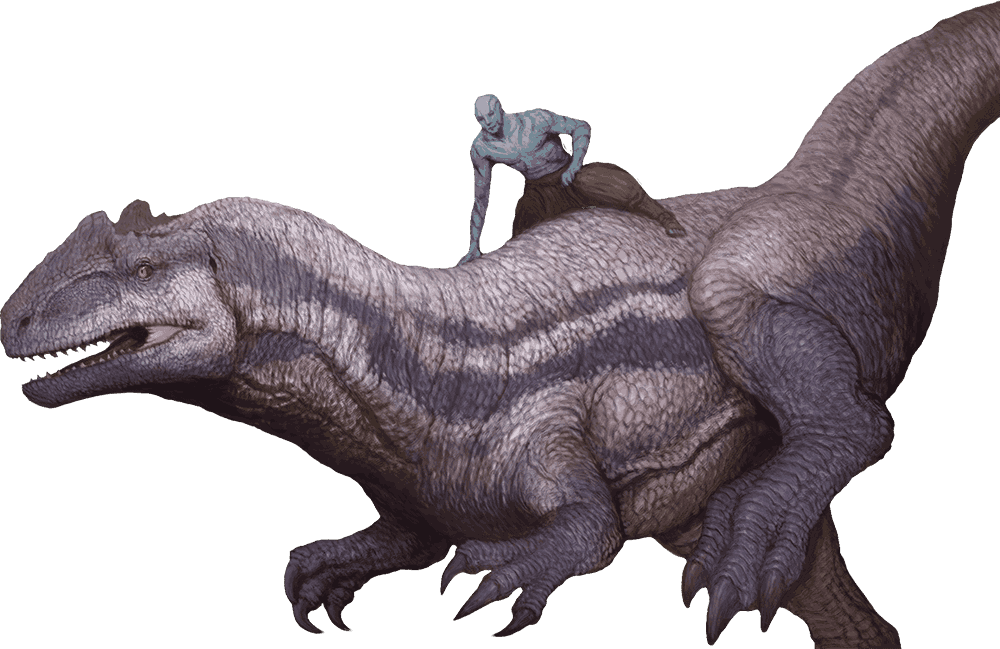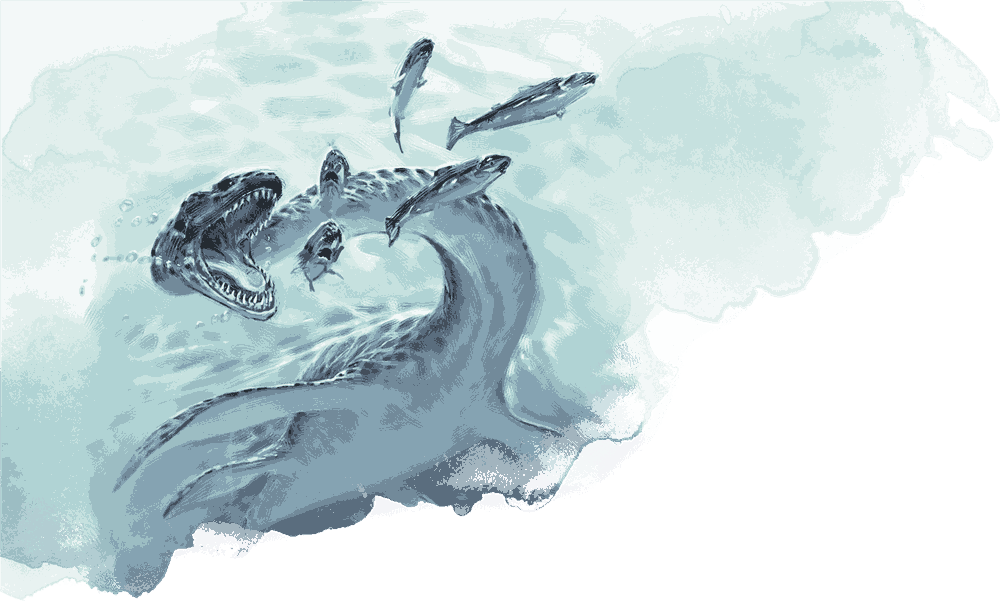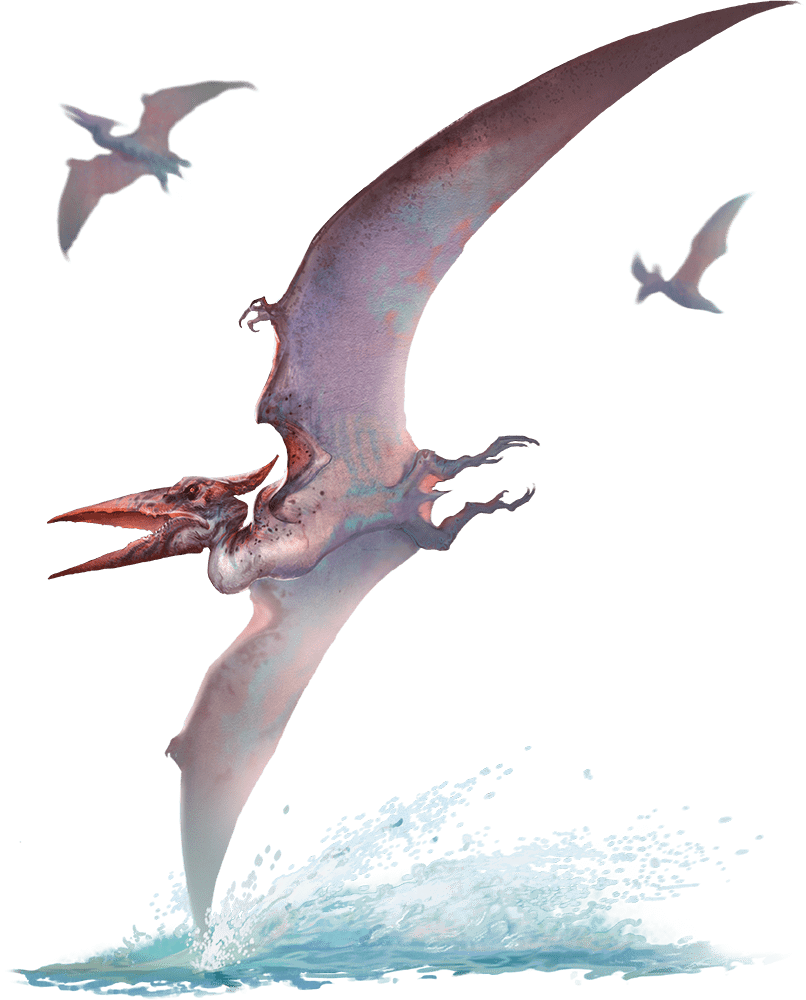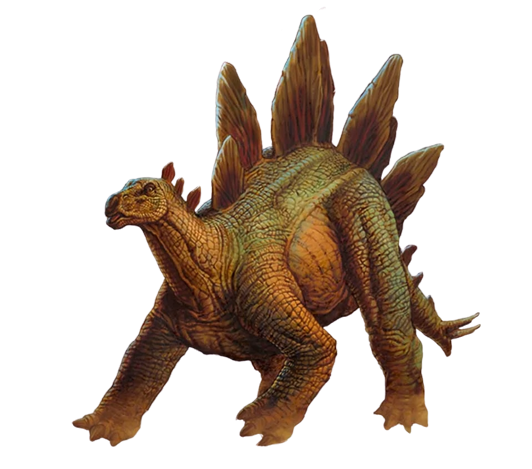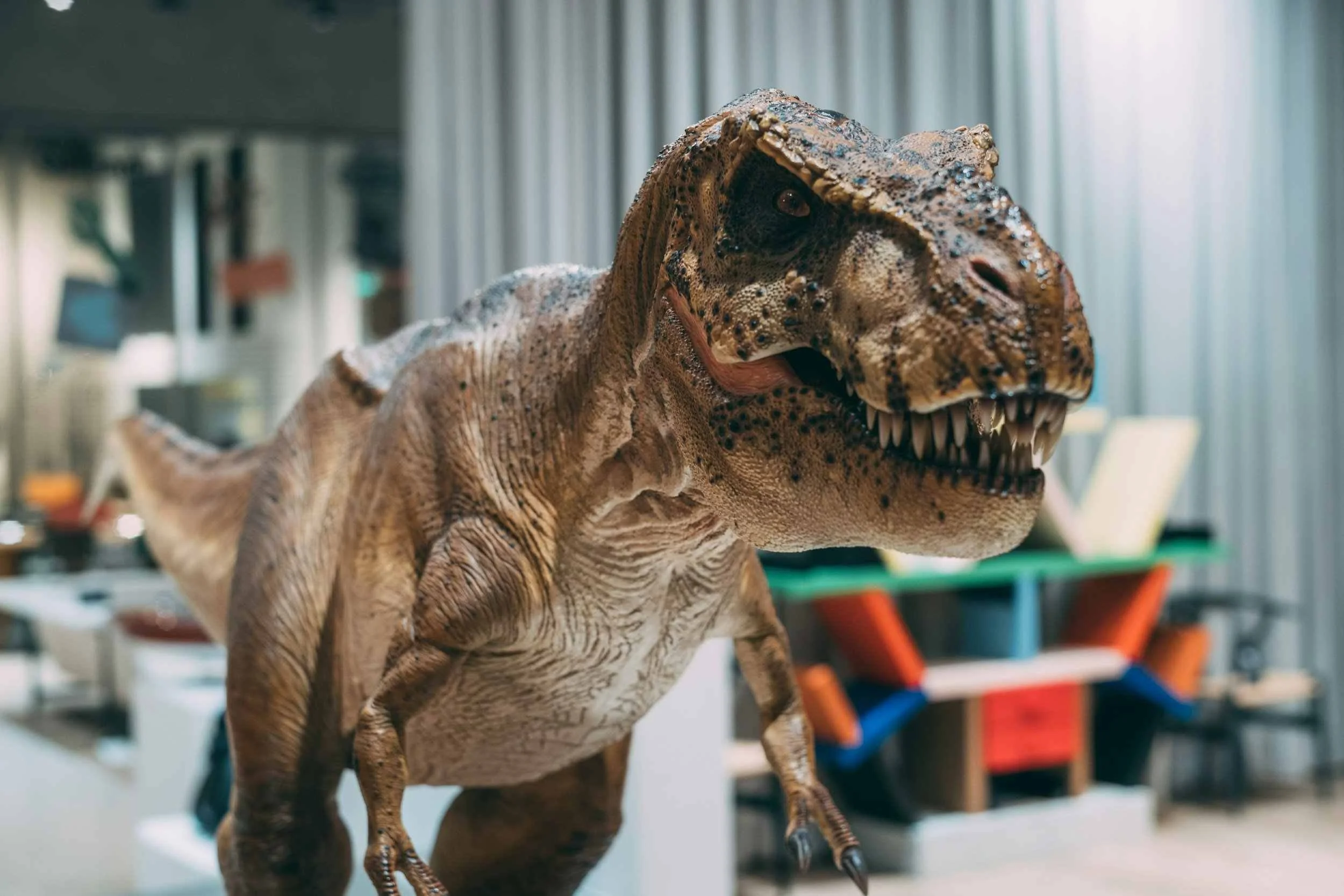10 Classic Dinosaurs in Dungeons and Dragons
Though dragons are by far the most iconic creature in Dungeons & Dragons, there are plenty of other monsters to encounter. In fact, there are actually dinosaur D&D stats in the official books! They have detailed attacks, ability scores, and lore for tons of different dinosaurs, all inspired by their actual historical counterparts. Check out our D&D dinosaurs list to compare stats, learn a little paleontology, and maybe even craft your own D&D dinosaur build!
Do Dinosaurs Exist in Dungeons & Dragons?
Not only are there official dinosaur stats for 5e, but dinosaurs canonically exist in its world, originating in the peninsula of Chult. In one of Chult’s ports, people actually race dinosaurs for entertainment, including two allosauruses by the name of “Bonecruncher” and “Nasty Boy” (both of which, by the way, totally sound like names someone would pick for their D&D character). The real-world allosauruses were the most common carnivore of their time, sporting nasty serrated teeth in their fearsome jaws and three pointed, curved claws on each arm. These assets are reflected in the allosaurus D&D statblock; their bite attack deals 2d10+4 damage, and, while their claws only deal 1d8+4 damage, a clever allosaurus can use them to knock over prey…and take an extra chomp for good measure.
Find an Armored Dinosaur in D&D 5e Books
The real-world ankylosaurus was covered in spiked armor plates with a tail club for defense. The plates, spikes, and tail were all made of hard bone, which survived long enough to make the fossils paleontologists used to identify them. In the world of Dungeons & Dragons, these dinosaurs are sometimes known as “rock-skins” for their plated bodies or, even cooler, “macetail behemoths”! The D&D statblock for the ankylosaurus reflects both their armor and tail; their Armor Class is 15, the highest of the dinos on this list, and it can attack twice with its tail, dealing 1d10+4 damage each time (and knocking down any prey its size or smaller without even giving it a chance to roll a saving throw)!
Is the Brontosaurus the Strongest Dinosaur in D&D?
The brontosaurus, Greek for “thunder lizard,” was a terrifying creature to behold, reaching lengths up to 75 feet and weighing between 15 and 20 tons. They’re recognizable for their tall necks, which they used to reach plants to snack on, and their long tails, which may have been used to whip potential predators (according to computer models, they could even crack like a whip)! The D&D 5e brontosauruses are known as “thunderbeasts” (a nod to the fact that “brontosaurus” is Greek for “thunder lizard”) and are peaceful creatures who won’t fight unless attacked (though most creatures are smart enough to leave them alone). The dinosaur statblock puts their strength score at 21, which, though shy of the T Rex’s 25, is nothing to sneeze at (plus, brontosauruses are Gargantuan instead of just Huge, like the T Rex). If you’re ever foolish enough to attack these giants in a game, you might just get stomped, taking 5d8+5 bludgeoning damage, or, worse, get whipped by its tail, which can do 6d8+5 damage to anybody within 20 feet!
Aquatic Dinosaur Dungeons & Dragons Stats
If you’re looking for an aquatic encounter for your D&D game, there are plenty to choose from. But if it’s a dinosaur you need, the answer is clear: pick the plesiosaurus. According to completed skeletons, this dinosaur looked a bit like a big, long-necked turtle. They were about 10 feet long (which may seem small until you’re the one swimming right next to it)! Paleontologists have identified around 50 conical teeth in plesiosaurus jaws, though they haven’t been able to agree on if the teeth were for hunting or scavenging. The official 5e stats certainly seem to think plesiosauruses were hunters; their bite deals 2d6+4 piercing damage, and they’re said to fight anybody in their way from their home in the Lake of Mists!
Spice Up Your Dinosaur D&D Campaign By Flying A Dinosaur
Though dragons don’t exist in real life, pteranodons might have been the next closest thing. They, too, had wings (and a wingspan of around 20 feet) and used their strong legs to leap into flight from land or sea. Perhaps it's no surprise, then, that a pteranodon is known as an Air Dragon in the world of D&D and are indeed used as mounts. To learn to ride one takes 6 weeks of hard training, but it’s a worthy endeavor; pteranodons can be flown into battle and even attack enemies with their beak. This dinosaur statblock gives them a bite attack dealing 1d8+2 damage, the ability to fly away from enemies without provoking an opportunity attack and a flying speed of 60 feet — twice the speed of most D&D characters on land!
Historically Accurate D&D 5e Stats
The stegosaurus is quite possibly the most recognizable dinosaur on this list. That’s primarily due to the diamond-shaped spikes down their spines and tails. Paleontologists have come up with many theories as to the purpose of these spikes. The current conclusion is that the plates on their backs were for keeping a consistent temperature (and looking scary) and that the spikes on their tails were used to fight back against predators (their plant-eating teeth and padded toes weren’t great for combat). The dinosaur’s D&D stats for 5e reflect this; the stegosaurus’ only attack is a melee tail attack, dealing 6d6+5 damage. Within the D&D world, stegosauruses are known as “spiketails” or “bloodspike behemoths” and behave much like their real-world counterparts, using spines to distribute heat and tails as a defense when attacked.
Play The Triceratops Dinosaur on DNDBeyond
The triceratops were named for their distinctive skull with an aerodynamic flare on the back and three horns on the front. Paleontologists first thought that they were used as weapons and to scare off predators, but they now think that the horns’ uses were similar to a modern deer: differentiating between one another and looking cool in front of the other triceratopses. Perhaps unsurprisingly, D&D went with the first interpretation. You can see right on DNDBeyond that their primary combat ability is goring with their horns, which deal 2d12+6 piercing damage (plus an extra 2d8 if the triceratops had a running start). In the world of D&D, triceratopses are aggressive creatures, killing anybody in their territory by trampling with their hooves or goring with their horns. In Port Nyanzaru, the same city as the dino races, there is a secret organization known as the Triceratops Society (or, in Chultan, the Ytepka Society). Members leave an iron token of a triceratops as a warning to those who violate the social order; if they don’t change their ways, the Triceratops Society will punish them in accordance with their crimes.
Check Out the Official T Rex D&D Stats
The statblock for D&D 5e’s T Rex is a doozy. They have a strength score of 25, a constitution score of 19, and two attacks on each turn. The first is its tail, which can deal 4d12+7 damage and grab their prey in a vice-like grip. The second is its jaws, which can bite down hard, dealing 4d8+7 damage. This is right in line with the actual tyrannosaurus rex: their skulls were up to 5 feet long with closely-packed teeth, and their bite was the strongest of any creature to walk the earth! Paleontologists used to think that a T Rex stood straight up, like Godzilla, but after doing the math, they realized that a tyrannosaurus would have had to stand with its head and tail down low in perfect balance, like in Jurassic Park. No matter how it stands, a T Rex is a phenomenal predator, with great vision, size, and ferocity. The designers of D&D couldn’t help themselves: they had to add magic to the mix. So they created a T Rex monster lord who can see invisibility, teleport, and even breathe a swarm of wasps!
The Velociraptor D&D 5e Build
Unlike in the Jurassic Park movies, real velociraptors were only about 5-7 feet long, and they very likely hunted alone. That’s because Michael Crichton, the author of Jurassic Park, actually based them on the deinonychus, a larger dinosaur that probably hunted in packs (but doesn’t have nearly as cool of a name). The velociraptor Dungeons & Dragons statblocks are a mix of both: they are smaller and have lower strength than deinonychuses, like real velociraptors, but they do still hunt in packs, like the velociraptors in the movies. In the world of D&D, velociraptors also have some of the best monster parts; their fangs can be crafted into shivs, while their hide can be used to create leather for armor.
Play Your Own Dinosaur D&D Adventure
The pages of the D&D books have even more dinosaurs than the ones we could list here: the archelon, the beinonychus, the regisaur, the quetzalcoatlus…the list goes on! If you’d like to test your mettle in a battle against a dinosaur – or perhaps find, tame, and even race these wild creatures, a real game of Dungeons & Dragons is a great place to do it. Here at Young Dragonslayers, we run D&D games for tweens and teens that meet every single week. They’re totally online, so as long as you have an internet connection, you’ll be able to play Dungeons & Dragons with other geek-minded players who share your age, play styles, and interests (you may end up with a whole party of paleo-enthusists on your hands)!
